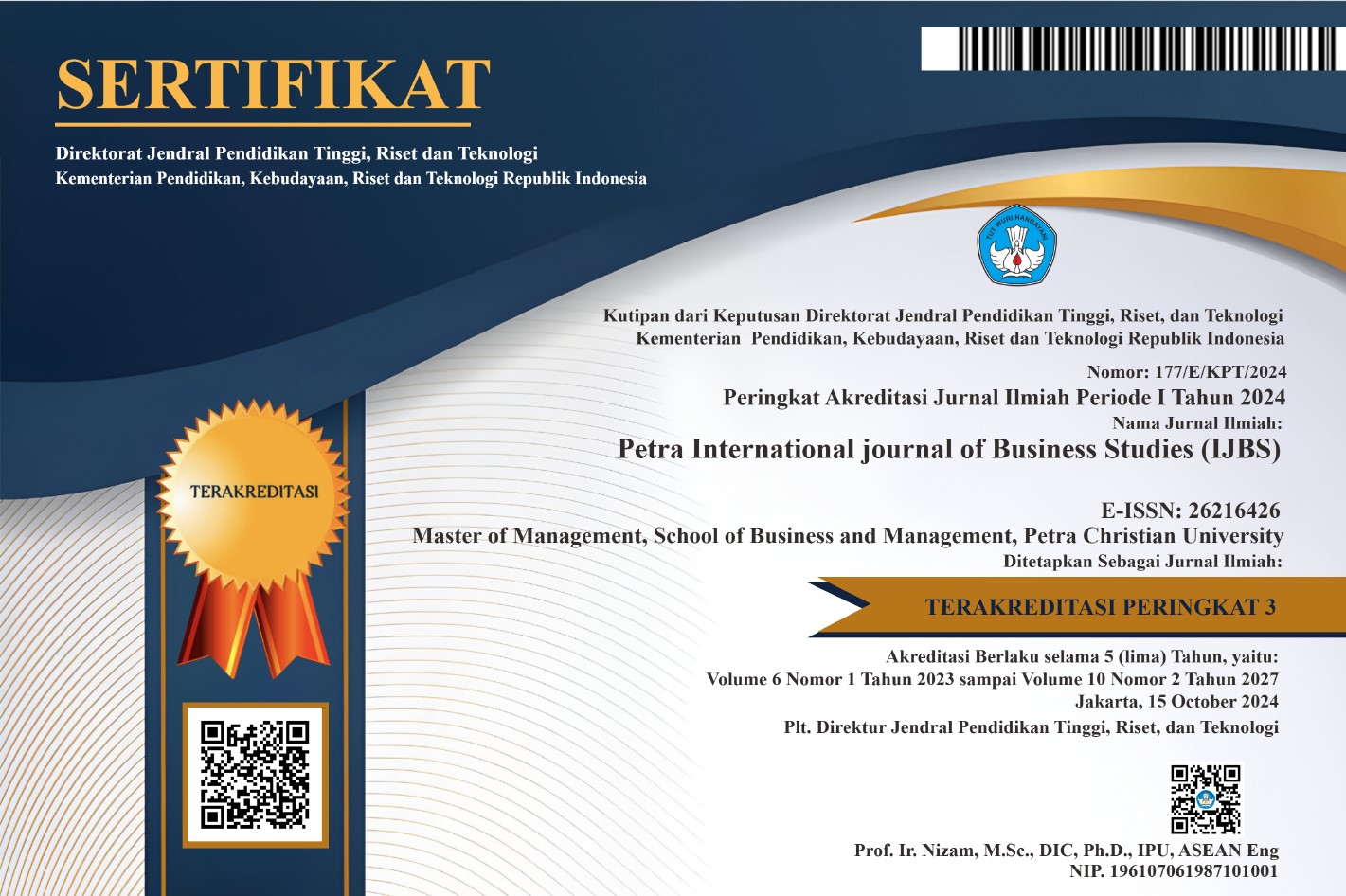Examining New Media Consumption from the standpoint of OTT Streaming Services
DOI:
https://doi.org/10.9744/petraijbs.6.1.92-101Keywords:
Consumption, Engagement, OTT, Motivation, SubscriptionAbstract
The study deals with consumer behavior in consuming OTT media streaming services in India. Nine variables of motivations such as Relaxation, Companionship, Habit, Pastime, Entertainment, Social interaction, Information, Arousal, and Escape are studied, which affect the intention to continue to subscribe to these services. Tools such as frequency analysis, One Way ANOVA, and Regression analysis are used to study the demographic characteristics, levels of motivation, differences between the demographic factors and variables of motivation, and the effect of variables of motivation on intention to continue subscription studied, respectively. The sample size was 309. Entertainment was the variable with the highest level of motivation. Except for Entertainment and Escape, all the variables significantly differed in different demographic groups concerning Gender, Age, and Education. Relaxation, Companionship, Habit, Information sharing, and Escape have been found to have a significant relationship with the intention to continue the subscription.
Downloads
References
L. E. Olsen, “Future of branding in the digital age,” At the forefront, looking ahead, p. 73, 2018.
Z. Yujie, M. A. I. Yasin, S. A. B. S. Alsagoff, and A. L. Hoon, “The mediating role of new media engagement in this digital age,” Front Public Health, vol. 10, 2022.
Y. Wu, “Social media engagement in the digital age: Accountability or threats,” Newsp Res J, vol. 39, no. 3, pp. 287–296, 2018.
C. Nicoletta, “The impact of the new media on society,” THE KNOWLEDGE-BASED ORGANIZATION, p. 121, 2008.
E. Sundaravel and N. Elangovan, “Emergence and future of Over-the-top (OTT) video services in India: an analytical research,” International Journal of Business, Management and Social Research, vol. 8, no. 2, pp. 489–499, 2020.
D. Dhiman, “Psychosocial Impact of Web Series and Streaming Content: A Study on Indian Youth,” Dhiman, B., & Malik, PS (2021). Psychosocial Impact of Web Series and Streaming Content: A Study on Indian Youth. Global Media Journal, vol. 19, no. 46, pp. 1–7, 2021.
V. Viswanathan, L. D. Hollebeek, E. C. Malthouse, E. Maslowska, S. Jung Kim, and W. Xie, “The dynamics of consumer engagement with mobile technologies,” Serv Sci, vol. 9, no. 1, pp. 36–49, 2017.
S. Kim, H. Baek, and D. H. Kim, “OTT and live streaming services: Past, present, and future,” Telecommunications Policy, vol. 45, no. 9. Elsevier, p. 102244, 2021.
S. Shin and J. Park, “Factors affecting users’ satisfaction and dissatisfaction of OTT services in South Korea,” Telecomm Policy, vol. 45, no. 9, p. 102203, 2021.
A. Palomba, “Building OTT brand loyalty and brand equity: Impact of original series on OTT services,” Telematics and Informatics, vol. 66, p. 101733, 2022.
A. M. Rubin, “Television uses and gratifications: The interactions of viewing patterns and motivations,” J Broadcast Electron Media, vol. 27, no. 1, pp. 37–51, 1983.
Additional Files
Published
Issue
Section
License
Copyright (c) 2023 Rajarathi Karunakaran, Selvabaskar S, Karthik Ram M, Guhan R

This work is licensed under a Creative Commons Attribution 4.0 International License.
Petra IJBS (e-ISSN: 2621-6426) is published by Master of Management program, School of Business and Management, Petra Christian University, Indonesia (MM SBM PCU).












